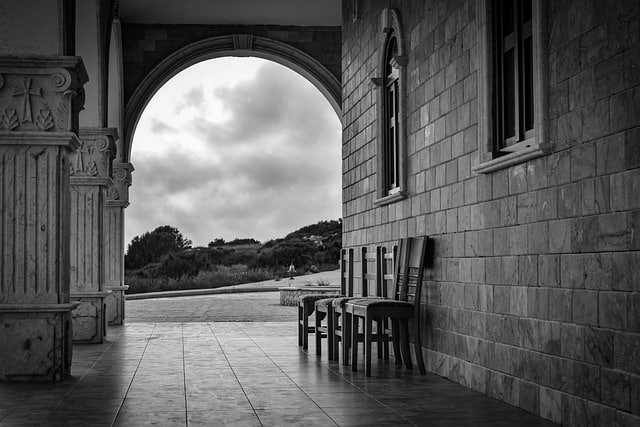
The stoa offers shelter without cutting off contact with the outside of the building.
The term estoa is not part of the dictionary of the Royal Spanish Academy ( RAE ). Its use, in any case, is common in the field of architecture and nautical .
Columns and repair
A stoa, or stoa , is a rectangular space that is made up of pillars or columns and has a roof. In some cases, it includes side walls.
Stoas were common developments in the classical architecture of Ancient Greece . They were found in public sectors such as agoras , gardens or gymnasiums to provide protection from inclement weather.
By offering shelter from rain or sunlight , the stoas were a meeting point. They could also include commercial posts .
We must not fail to mention the peculiar natural lighting that can be seen in the stoas. Thanks to its characteristic construction based on a large number of columns, the sunlight falls inside, tracing imposing rays that provide a very particular warmth. Given the behavior of light, which bounces from one body to another, mixing colors in its path, the result is a cohesion that seems more typical of a closed space. Today you can still find remains or reconstructions of Greek stoas.
The Middle Stoa
The Middle Stoa of Athens was located in the central part of the agora, which divided into its southern and northern areas. We are referring to the agora of Athens, where the most important activity of the ancient city was centered, bringing together commerce, administration and politics, without leaving aside religion, culture and justice. It was a large open space, rectangular in shape, around which there were numerous public buildings.
Throughout the second century BC. C., the southern side of the agora underwent drastic changes as new buildings were built. The first of them was precisely the Stoa Media, whose works took place between the years 180 and 140 BC. C. Regarding its dimensions, it was erected along 150 meters , from the eastern to the western side of the plaza , which was divided into two unequal parts.
The Middle Stoa is not only the first building in the agora of Athens, but also the largest. Its columns combined the Ionic and Doric orders of architecture, and the materials used for its construction were limestone and terracotta. There are traces of a parapet (a type of wall) that probably had the function of dividing the building into smaller parts. Three of its columns and the stairs are also preserved at its east end . Despite everything said, it is important to highlight the modest nature of this stoa, whose fundamental objective was the practice of commercial activities.
The Stoa of Attalus
The Stoa of Attalus is located in the eastern area of the agora of Athens . King Attalus II Philadelphius was the one who ordered its construction in the 2nd century BC as a gift to the Athenian polis , in recognition of the education he had given him before ascending to the throne.

Stoa of Attalus, in Athens, rebuilt since 1953
In the year 267, a Germanic tribe known as the Heruli destroyed it, although its northern part survived. Between 1953 and 1956, however, the American School of Classical Studies in Athens carried out its reconstruction with the financial support of John D. Rockefeller Jr.
stable tide
The concept of stoa, on the other hand, is used to refer to the period in which the tide does not rise or fall . With the stoa, the height of the tide remains stable, whether at low tide or high tide. There is also talk of estoa to refer to the moment where the current associated with the tide is canceled.
